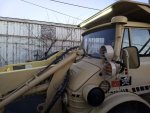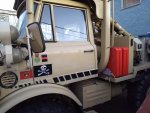FarmMOG
Member
- 42
- 1
- 8
- Location
- Texas/Oklahoma
I have been thinking about how to run a double set of aux hydraulics to the front loader arms to use like a conventional skid steer tractor. This is my thought: have a hydraulic splitter manifold plumbed into the aux hydraulic circuit that is already on the SEE. Here is a link to a three way manifold splitter https://summit-hydraulics.com/produ...MIvLik5KmI2AIVAQNpCh25eg9vEAYYCSABEgKEz_D_BwE.
You could have another power line connected to the current solenoid control with a one way diode that would prevent the other switch from activating the air solenoid and the rpm coming up to 2000 RPM whenever it was switched on. This new solenoid would control two separate hydraulic lines independently of each other and still allow aux hydraulics from the currently installed system. It would prevent having to plumb the rear hydraulic system up to the front and thus having to switch the lines from the backhoe to the front every time you needed to use the system. I think it would work like a champ. Any comments or suggestions would be greatly appreciated. Thanks in advance.
You could have another power line connected to the current solenoid control with a one way diode that would prevent the other switch from activating the air solenoid and the rpm coming up to 2000 RPM whenever it was switched on. This new solenoid would control two separate hydraulic lines independently of each other and still allow aux hydraulics from the currently installed system. It would prevent having to plumb the rear hydraulic system up to the front and thus having to switch the lines from the backhoe to the front every time you needed to use the system. I think it would work like a champ. Any comments or suggestions would be greatly appreciated. Thanks in advance.


![DSCN1653[1].jpg DSCN1653[1].jpg](https://www.steelsoldiers.com/data/attachments/488/488688-368e66743132febb6324ba284f4ddcb0.jpg)
![DSCN1652[1].jpg DSCN1652[1].jpg](https://www.steelsoldiers.com/data/attachments/488/488689-31ec082e398a39449fa62b4daef42ea5.jpg)
![DSCN1650[1].jpg DSCN1650[1].jpg](https://www.steelsoldiers.com/data/attachments/488/488687-404c6b3100243d65bb0c0223a75a02ce.jpg)

